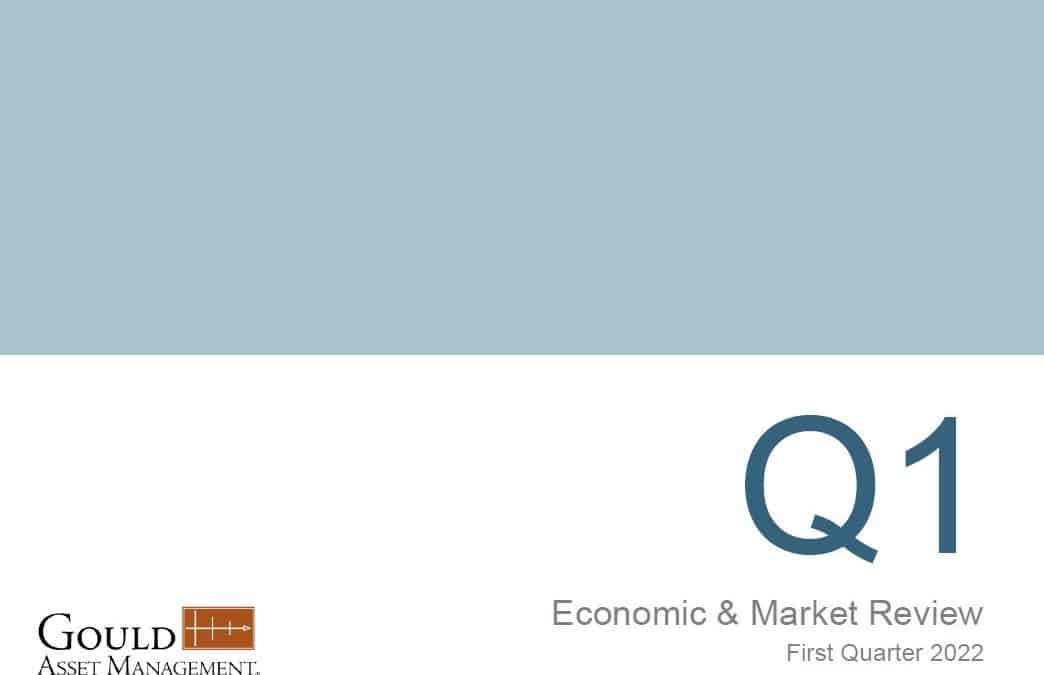by The Gould Asset Management Team Note: This post is an excerpt from Gould Asset Management’s Economic and Market Review for the First Quarter of 2022. The excerpt is posted here for the benefit of our blog subscribers.
US Growth Strong Despite Emergence of New
Headwinds
The US economy expanded at a 6.9% annualized rate in the fourth quarter and grew 5.7% for the whole of 2021, the strongest pace since 1984. Momentum slowed to start the new year amid a surge in Covid cases in January and sustained high inflation.
Employers added over 400,000 jobs for the 11th straight month in March, and the headline unemployment rate fell to 3.6%. Job openings remain near record highs, drawing in more workers to the labor pool. Wage growth is strong, rising 5.6% year over year, but still lags the current pace of inflation.
Manufacturing activity slowed in March as supply chain issues continued to drive up input prices. Hiring in the sector picked up though, allowing factories to clear some of the backlog of unfinished work.
With a marked decline in Covid cases by the end of the quarter, consumers shifted their spending in March from motor vehicles and other goods to services like hotels, restaurants, air travel, and healthcare. Household balance sheets are generally healthy due to accumulated savings through the pandemic and rising wages for workers.
Liftoff at the Federal Reserve
The Fed raised its key interest rate by 0.25% its first increase since 2018, and penciled in six more quarter percentage point hikes by the end of the year as it aims to cool high levels of inflation.
Fed chair Jerome Powell indicated he is willing to do whatever it takes to tame inflation and signaled the committee’s willingness to implement multiple 0.50% rate hikes, if necessary. A plan to reduce the Fed’s balance sheet could also be finalized in May, with officials signaling a quicker unwind than the one carried out in 2017.
Market participants are expecting even tighter monetary conditions than the Fed is projecting. Markets are forecasting the federal funds rate (currently 0.25% 0.50%) to be 2.50% 2.75% by year end, suggesting the Fed will implement several 0.50% rate increases.
Recession talk has increased as a result of monetary tightening, but Mr. Powell deflected these concerns, pointing to strong household balance sheets and consumer demand.
To continue reading, please see our entire Economic and Market Review.

